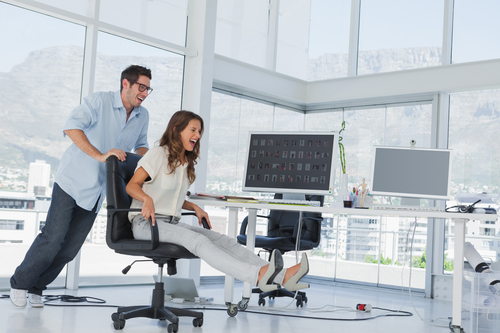 The “best” office chair is one that is neutral. So, what does this mean? Basically, you want an office chair that can conform well to all body shapes and sizes without applying unnecessary pressure in certain areas or contributing to various aches, pains, or discomforts. You also want office chairs capable of distributing weight evenly and providing dynamic support by adjusting to each sitter’s body. Here’s what you need to know about the basics of good office chair design.
The “best” office chair is one that is neutral. So, what does this mean? Basically, you want an office chair that can conform well to all body shapes and sizes without applying unnecessary pressure in certain areas or contributing to various aches, pains, or discomforts. You also want office chairs capable of distributing weight evenly and providing dynamic support by adjusting to each sitter’s body. Here’s what you need to know about the basics of good office chair design.
Discomfort while sitting in an office chair is sometimes caused by surface pressure that’s not distributed properly. Ideally, pressure distribution should place maximum pressure under a sitter’s “sitting bones” while they are in an upright position and the lower (lumbar) and mid-back (thoracic) areas area in natural reclined positions. The excessive surface pressure in office chairs may contribute to:
Some chair designers use pressure mapping technology to get an idea of how a typical sitter’s weight will be distributed within a chair. Other factors considered with chair design include the general mechanics of how a body moves through space and the range of postures a chair is able to support – referred to as kinematics.
When tackling the problem of reducing circulation-restricting pressure, some office chair designers strive to find the right combination of contour and padding. This means curving the structure of the chair so it’s not placing excessive pressure on the pressure-sensitive areas of the body. Foam cushioning is then added to encourage proper alignment and provide sufficient support.
However, finding this perfect contour-padding combo can be difficult. After all, a chair that’s supportive and comfy for a taller male may hit all of the wrong pressure spots when a shorter woman sits in the same chair. Too much padding can also cause issues, like putting too much pressure on gluteus maximus muscles, the sciatic nerve, or the heads of the femur bones.
Experiments with chair design show that a chair with a topographically neutral seat and backrest that supports various sitters’ weights and bodily proportions increases the odds of allowing sitting workers to benefit from the chair’s pressure distribution features. Possible solutions to other office chair design challenges include:
Here at Office Innovations, we have helped hundreds of clients with the selection and installation of office furniture. We’ve seen it all and done it all.
Contact us today with questions. We’re always happy to help.